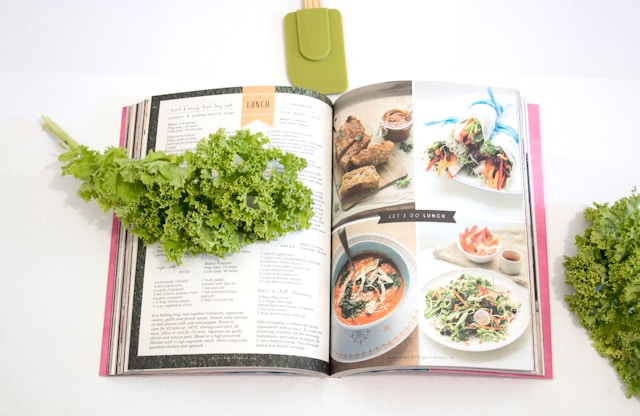Understanding the Fundamentals of Recipes
At the heart of any great meal lies a well-crafted recipe. But what exactly is a recipe, and how can we master the art of creating and following them? A recipe is a set of instructions that guide us through the process of preparing a specific dish or meal. It outlines the necessary ingredients, their quantities, and the step-by-step procedures to combine and cook them.
To truly understand the fundamentals of recipes, let’s dive into the key components that make them up:
- Ingredients: The building blocks of any recipe, ingredients are the various foods, spices, and seasonings that are combined to create a dish.
- Measurements: Precise measurements ensure the right balance of flavors and textures in a recipe. Mastering the art of measuring ingredients properly is crucial.
- Instructions: The step-by-step directions that guide the cook through the preparation process, from prepping the ingredients to the final presentation.
- Cooking methods: The techniques used to transform the raw ingredients into a delectable dish, such as sautéing, baking, or grilling.
By understanding these fundamental elements, you’ll be well on your way to decoding and following recipes with confidence.
Ingredients and Tools
Crafting a successful recipe goes beyond just the ingredients; it also requires the right tools and equipment. Let’s explore the essential items every well-equipped kitchen should have:
Essential Cooking Equipment and Utensils
- Pots and pans: A variety of sizes and materials, such as stainless steel, non-stick, and cast iron.
- Knives: A high-quality chef’s knife, paring knife, and serrated knife are must-haves.
- Cutting boards: Invest in both wooden and plastic cutting boards to accommodate different tasks.
- Mixing bowls: A set of nested bowls in various sizes for prepping, mixing, and serving.
- Measuring cups and spoons: Ensure accurate measurements for consistent results.
Stocking a Well-Equipped Kitchen
When it comes to ingredients, it’s important to have a well-stocked pantry and refrigerator. Some essential items include:
- Grains: Rice, pasta, quinoa, and breadcrumbs.
- Proteins: Meat, poultry, fish, eggs, and legumes.
- Produce: A variety of fresh fruits and vegetables.
- Dairy: Milk, cheese, yogurt, and butter.
- Herbs and spices: A diverse selection to enhance flavors.
- Oils and vinegars: For cooking, dressings, and marinades.
By having these essential tools and ingredients on hand, you’ll be prepared to tackle any recipe that comes your way.
Techniques and Methods
Mastering the art of recipes also involves understanding the various cooking techniques and methods. Let’s explore some of the most common ones:
Common Cooking Techniques
- Sautéing: Quickly cooking ingredients in a hot pan with a small amount of fat.
- Roasting: Cooking food in the oven with dry heat, often at high temperatures.
- Baking: Using the oven’s dry heat to cook food, typically for breads, cakes, and pastries.
- Boiling: Submerging ingredients in rapidly bubbling water to cook them.
- Grilling: Cooking food over direct, high-heat from below, often used for meats and vegetables.
Step-by-Step Guide to Following a Recipe
- Read the recipe thoroughly: Understand the ingredients, quantities, and instructions before beginning.
- Prepare the ingredients: Measure, chop, and organize all the necessary items.
- Follow the instructions: Carefully execute each step in the order provided.
- Adjust as needed: Be prepared to modify cooking times or techniques based on your specific setup and ingredients.
By mastering these techniques and following recipes diligently, you’ll be able to consistently produce delicious, restaurant-quality meals in your own kitchen.
Creativity and Experimentation
While following recipes to the letter can yield fantastic results, the true joy of cooking often lies in the freedom to experiment and put your own unique spin on a dish. Developing your own recipe ideas and modifying existing ones can be a thrilling and rewarding process.
Developing Your Own Recipe Ideas
- Draw inspiration from your favorite dishes: Analyze the flavors, textures, and components that you love, and use them as a starting point.
- Explore new ingredients and flavor combinations: Don’t be afraid to step outside your comfort zone and try something new.
- Incorporate personal preferences and dietary needs: Tailor recipes to suit your taste buds and dietary requirements.
Modifying Recipes to Suit Your Preferences
- Swap out ingredients: Replace items you dislike with alternatives that complement the dish.
- Adjust seasoning and spices: Increase or decrease the amount of herbs, spices, and condiments to fine-tune the flavor profile.
- Experiment with cooking methods: Try roasting instead of sautéing, or baking instead of grilling to see how it affects the outcome.
Remember, the key to successful recipe experimentation is to approach it with an open mind and a willingness to learn from your successes and failures. The more you practice, the more confident you’ll become in your ability to create truly unique and delicious dishes.
Organization and Planning
As your collection of recipes grows, it’s important to have a system in place to keep them organized and easily accessible. This not only makes meal planning and preparation more efficient but also ensures you never lose track of your favorite culinary creations.
Creating a Recipe Database or Collection
- Physical recipe binders or folders: Neatly arrange printed recipes in clear sleeves or dividers.
- Digital recipe management apps: Utilize apps like Paprika, Pepperplate, or Evernote to store and organize your recipes electronically.
- Online recipe boards: Create a virtual pinboard on sites like Pinterest to compile your favorite recipes.
Meal Planning with Recipes
- Weekly or monthly meal planning: Review your recipe collection and plan out your meals in advance.
- Batch cooking and recipe scaling: Cook larger portions of recipes to enjoy throughout the week.
- Incorporating recipes into your lifestyle: Identify dishes that fit your dietary needs, budget, and cooking time constraints.
By staying organized and incorporating recipes into your meal planning, you’ll be able to streamline your cooking process and ensure you always have a delicious, home-cooked meal at the ready.
Sharing and Enjoying Recipes
Recipes are meant to be shared and enjoyed with others. Whether you’re posting your creations online or hosting a dinner party, there are several ways to showcase your culinary skills and bring people together through the power of good food.
Tips for Photographing Recipes
- Use natural lighting: Position your dish near a window or take photos outdoors for the best results.
- Experiment with angles and compositions: Try overhead, side, and close-up shots to capture the most appetizing visuals.
- Garnish and style your plate: Add fresh herbs, drizzles of sauce, or other decorative elements to make your dish photo-ready.
Sharing Recipes Online and In-Person
- Start a food blog or social media account: Share your recipes, cooking tips, and food photography with a wider audience.
- Compile a recipe book or zine: Create a personalized collection of your favorite dishes to gift to family and friends.
- Host recipe-based gatherings: Organize potlucks, cooking classes, or themed dinner parties to bring people together around the joy of cooking.
By embracing the art of sharing recipes, you’ll not only inspire others to get creative in the kitchen but also foster meaningful connections and memories centered around the universal language of food.
Recipes for Every Occasion
Recipes are incredibly versatile, catering to a wide range of dietary needs, budgets, and occasions. Whether you’re looking for quick and easy weeknight meals, gourmet dishes for special events, or nutritious options for a healthier lifestyle, the world of recipes has something to offer everyone.
Quick and Easy Weeknight Recipes
- 30-minute meals: Flavorful dishes that can be prepared in under an hour, perfect for busy weeknights.
- One-pot or sheet pan recipes: Minimal cleanup and hands-off cooking make these great for weekday meals.
- Slow cooker and Instant Pot recipes: Set it and forget it for effortless, hands-off cooking.
Gourmet Recipes for Special Events
- Elaborate multi-course meals: Impress your guests with a beautifully presented, restaurant-worthy dining experience.
- Specialty baked goods: Wow your loved ones with intricate cakes, pastries, and other baked delights.
- Elevated cocktails and mocktails: Craft signature drinks to complement your menu.
Healthy and Balanced Recipes
- Nutrient-dense ingredients: Incorporate more fruits, vegetables, whole grains, and lean proteins.
- Dietary restrictions: Cater to vegan, vegetarian, gluten-free, or other dietary needs with specialized recipes.
- Portion control: Recipes designed to provide balanced, satisfying servings.
No matter the occasion or your dietary preferences, there’s a recipe out there that can fulfill your culinary desires and bring people together around the table.
The Evolution of Recipes
Recipes have been an integral part of human history, evolving alongside our culinary traditions, technological advancements, and cultural exchanges. Let’s explore the fascinating journey of how recipes have transformed over time.
The History of Recipe-Sharing
- Handwritten recipe books: Before the printing press, recipes were painstakingly recorded in personal journals and passed down through generations.
- Printed cookbooks: The invention of the printing press revolutionized recipe-sharing, allowing for the mass production and distribution of culinary knowledge.
- Recipe cards and magazines: These compact, easy-to-share formats became popular in the 20th century, making recipes more accessible.
Modern Recipe Trends and Innovations
- Digital recipe platforms: The internet has democratized recipe-sharing, with countless websites, apps, and social media channels dedicated to recipes.
- Personalized recipe recommendations: Algorithms and AI-powered tools now suggest recipes tailored to individual preferences and dietary needs.
- Video and interactive recipes: Multimedia formats, such as recipe videos and augmented reality, provide a more immersive cooking experience.
The Role of Technology in Recipes
- Smart kitchen appliances: From connected ovens to intelligent cooking assistants, technology is transforming the way we interact with recipes.
- Online grocery shopping and delivery: Streamlining the ingredient-gathering process, making it easier to follow recipes.
- Social media and food influencers: Recipes are now shared, discussed, and celebrated on a global scale through various digital platforms.
As we look to the future, the evolution of recipes will undoubtedly continue, driven by advancements in technology, changing dietary preferences, and the ever-evolving culinary landscape. By embracing this dynamic progress, we can elevate the art of recipe-making and enjoy the endless possibilities it has to offer.
Embracing the Art of Recipes
Recipes are the foundation of countless delicious meals and the cornerstone of any well-stocked kitchen. By understanding the fundamentals, mastering the essential tools and techniques, and embracing the creative freedom to experiment, you can truly elevate your cooking prowess and unlock a world of culinary possibilities.
Remember, the true joy of recipes lies not only in the final dish but also in the journey of discovery, the memories made, and the connections forged around the table. So, let’s continue to explore, innovate, and savor the art of recipes, one delectable bite at a time.

